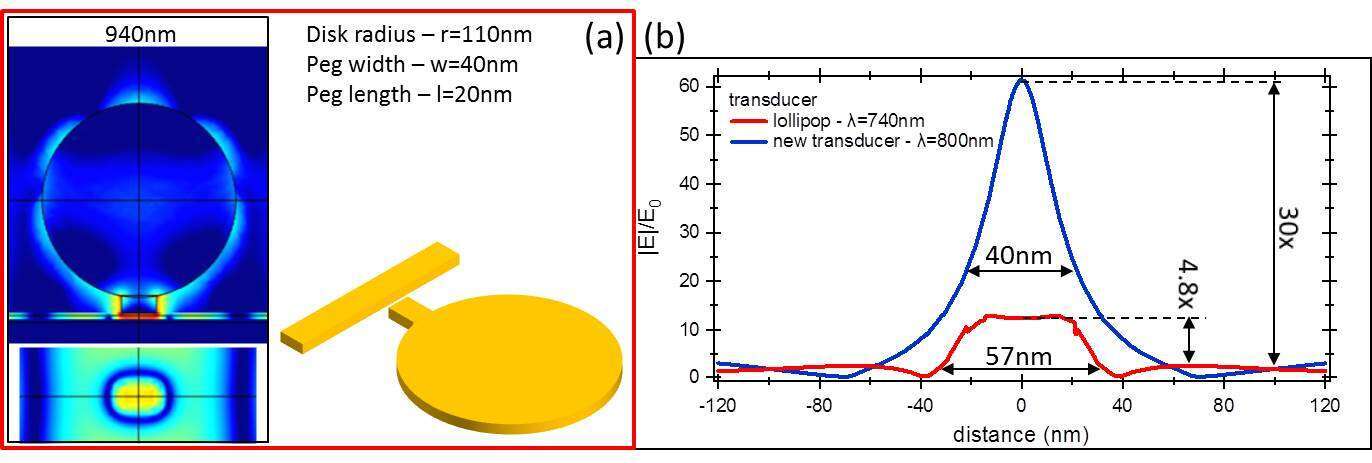
Novel Plasmonic Near-Field Transducer for Heat-Assisted Magnetic Recording
The efficiency of novel near-field plasmonic transducer designs, as can be used in HAMR (heat-assisted magnetic recording) systems, are analyzed with simulations performed using the finite-element method (FEM). To validate the simulations, the data of the new transducer designs were compared with the published results of the lollipop transducer [1] where our simulations (Fig.1) show a good agreement with the reported experimental data. The investigated transducer shows a five-fold improvement in terms of the electric field enhancement while achieving a spot size of 20-30nm and a ratio between the hotspot and side-lobe which exceed 36 which is at least 8 times higher compared to the lollipop transducer.
The transducer was designed to excite quadrupole-like and higher order modes to ensure better impedance matching with a recording media and, consequently, better coupling of power to the recording media. In addition, it ensures better heat dissipation to the surrounding media which will lead to improved transducer reliability.
[1] W. A. Challener et al.,”Heat-assisted magnetic recording by a near-field transducer with efficient optical energy transfer”, Nature Photon. 3, 220–224 (2009).

jacek.gosciniak@tyndall.ie
Powered by Eventact EMS